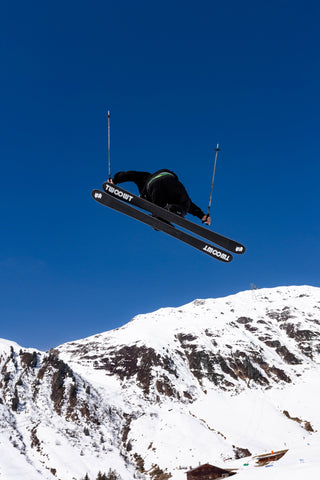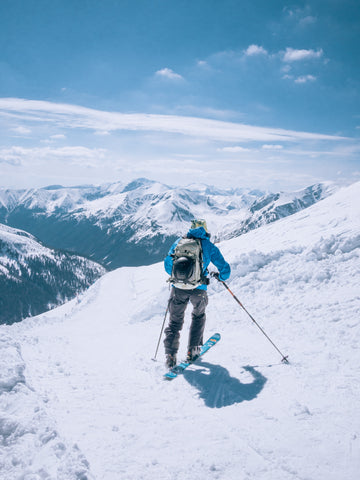Winter sports are fun, even if they can be physically demanding. The most popular one, skiing, is more than exhilarating. That’s one of the reasons you see so many people travel so many miles to go skiing. Whether you’re a pro or a complete novice, you should take caution. Know what you need and what to do – to have fun and stay safe on the slopes.
We’ve compiled some checkpoints for your gear and invaluable pointers that can keep you safe while you’re skiing. Let’s get right into the list.
The Importance of Skiing Gear
Before you even set out, you’ll need to have all the basic gear prepared and ready to use. And you should know: skiing takes up all your time, in a good way.
If you enjoy it, you don’t mind putting in the hours and the grueling physical labor it takes to get better or to just have more fun skiing.
If you have any leftover college work, better delegate it to write my essays online by Studyfy service so you can go skiing completely uninterrupted. It’s better to immerse yourself when you’re there. Now, let’s look at what you’ll need.
A Good Helmet
Firstly, you’ll need a helmet. Your head needs to be protected at all times, so get a helmet that can cushion a potential fall and absorb shock from a potential collision. If you go to a certified sporting goods store, you should be able to find a proper helmet. Alternatively, you can rent it out at the ski resorts. They typically provide them.

Goggles
Goggles keep your eyes protected, offer some amount of warmth, and, most importantly, block harmful UV rays, as well as provide clear vision in snowfall or sunshine. You can also opt to get goggles that have anti-fogging features. Remember to take good care of your goggles. They can get damaged from rough usage pretty easily.
Layers & The Right Clothing Gear
You’ll need to get yourself the right clothes for skiing. You’ll typically need to layer it up as well since it tends to get very cold up there in the mountains. Typically, skiing resorts can also provide skiing clothes for rental or purchase. However, we advise you to go to a sporting goods store beforehand. You’ll have more options, and it will normally be cheaper.
Luckily, you’ll only need to go to the ski section of your store, and you should be able to find ski-specific clothing like:
- Balaclavas
- Beck gaiters
- Waterproof gloves and socks
- Ski pants
- Ski Jackets
Opt to go for three layers. A base layer, a mid-layer, and finally, your jacket. For the bottom part, put on some leg warmers before you put on socks and pants.
Safety Tips For Your Next Ski Trip
Be Humble & Stick To Your Slope Level
While it might be tempting to do a more challenging slope, this can spell danger and potential broken bones. Do some training and be 100% sure that you’re ready to take a higher-level slope but don’t just rush in and do it with reckless abandon.
If you know you’re not qualified or skilled enough, then stick to a slope on your skill level and practice/have fun on that slope until you master it before moving on to the next. If you want to attempt a more difficult slope, visit one with a friend or family member that knows how to do it.
It’s better if you observe them before attempting it yourself. You can also pay a ski instructor to help you while you’re on the slopes. We think this is the best option since they can genuinely help you advance and give you the best pointers to do so.
Warm Up & Stretch
Do active stretches before attempting to hit the slopes. Circle your arms around, circle your knees around, jump to activate your leg muscles, stretch your back to warm up your spine, and so on. It’s crucial to remember to do active stretches and not static stretches.

Static stretches are better done after you’ve gone skiing and are coming back to your hotel or lodge. Stretches can help your mobility and prepare your body to engage in physical activity. Stretching helps you avoid getting hurt to some degree.
Be Mindful And Respect The Code of Conduct
Be mindful of yourself and others when you’re on the slopes. Don’t neglect these two rules, as they’re decisive for everyone’s safety.
The slopes can be unpredictable. You can collide with someone, you can get stuck in the snow, and you could potentially cause an avalanche or mini-avalanche.
There are many things to consider. Firstly, become aware and familiar with skiing conduct.
You’ll know better what to do and what not to do, and in the case of an emergency, you can potentially help someone in trouble (or help yourself).
Because it can get unpredictable and some slopes can be extremely dangerous, it’s up to all the skiers to practice vigilance and the right skiing conduct. Don’t put yourself at risk and put others at risk by being extremely reckless.
Be Informed About Weather & Avalanche Conditions
While it may be tempting to just go out there without worrying too much, it’s smarter to be informed of weather conditions and avalanche conditions before you hit the slopes. Update yourself and check the forecast and snow conditions, and check if there’s any risk of avalanches. This information should all be readily available online, or you can ask the ski resort itself.
As an extra step, you can even take a safety course on how to deal with avalanches. This way, you can learn how to handle yourself if you ever find yourself in a nasty predicament, and you can carry rescue equipment just in case.
Final Thoughts
Do you want to embark on a thrilling adventure? Skiing is one of them. We hope that you take our advice and prepare yourself before you go on your ski travels. Even if you’re a professional skier, danger doesn’t exclude anyone. It’s better to be safe than sorry.
ABOUT THE AUTHOR
Aleksandra Djurdjevic
Senior Content Creator
Aleksandra Djurdjevic is a senior writer and editor, covering snowboarding, skiing and trends in outdoor winter activities. She has previously worked as ESL teacher for English Tochka. Aleksandra graduated from the Comparative Literature department at the Faculty of Philosophy in Serbia. Aleksandra’s love for the mountains, getting out in the snow on her board, season after season, seeking wild snow adventures across the globe helps her continue to be a top expert at CSG.






